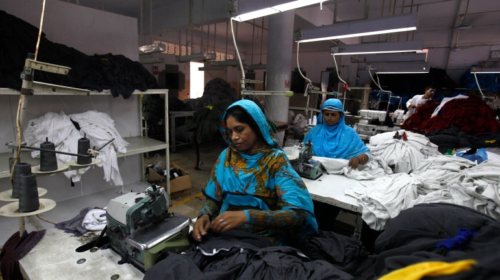Pakistan’s government is targeting a trade deficit of $30bn in the current fiscal year, with new export-centric policies focused on reducing the country’s reliance on textiles and providing incentives to other sectors, the country’s top commerce official has said.
Textiles are the South Asian country’s major export, making up more than 60 percent of the country’s $25.3bn in exports last year, according to government data.
The sector continues to receive the lion’s share of government export sector subsidies, including subsidised energy, access to cheap credit for working capital and long-term capital expenditure and duty drawback concessions. This year, government subsidies to the textile sector have amounted to an estimated $780m, according to government data and industry estimates.
In the current fiscal year which ends in June, textile exports have risen by 26 percent, amounting to $9.38bn, according to the data.
Abdul Razaq Dawood, the Pakistani prime minister’s adviser for commerce and investment, told Al Jazeera in an interview that his ministry is working on policies to wean the economy off its dependence on textile exports, although incentives to the textile sector would also continue.
“We have to diversify our exports. We cannot rely on just textiles,” he said. However, he expects textiles to continue to be the major export “at least for the next five years.” The one sector he expects will eventually surpass textiles is information technology. “If it keeps growing at the same pace, then after five years … IT will start becoming our number one [export],” Dawood said.
Pakistani IT exports in the current fiscal year stand at $1.3bn, according to central bank data, an increase of 36 percent over the same period last year, but still just seven percent of overall exports.
Dawood said his government was targeting the pharmaceutical and engineering sectors as other areas of potential growth.
Pharmaceutical exports have shrunk by 0.66 percent to $137.98m this fiscal year so far, while engineered goods exports have risen by 7.5 percent to $109.23m, according to government data.







